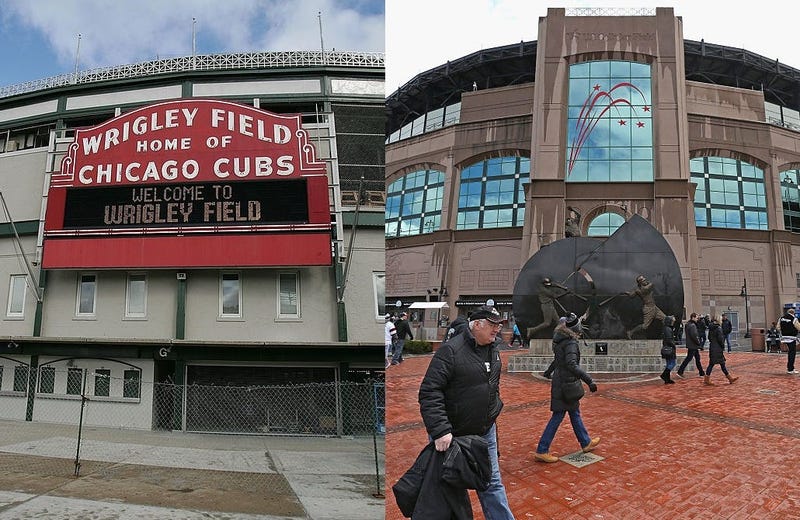
(WBBM NEWSRADIO) -- Comiskey Park -- the first one -- was built on the site of Chicago's town landfill.
Weeghman Park, which would become Wrigley Field, was built on the site of an old seminary.
They're centers of commerce now, but that certainly wasn't always the case.
"(Ballparks) were really planned on the edge of cities," says Pulitzer Prize-winning architecture critic Paul Goldberger. "And then the cities kind of grew around them, and they all kind of knitted together in a really nice and almost organic way."
That integration and development is the subject of Goldberger's new book, "Ballpark: Baseball in the American City." Right on the cover is beautiful Wrigley Field, a park the author calls "very special.”
"The way in which that incredible, brilliant green grass of the field contrasts to both the structure of the stadium or the ballpark itself and the city around it is the most dramatic and the most beautiful juxtaposition of city and country weaving themselves together that we see anywhere."
Of course, today's Wrigley is very different from the Wrigley of five years ago, let alone the park visitors saw on Opening Day in 1914. Goldberger gives the most recent set of renovations positive reviews, though he's less sanguine about “improvements” to the surrounding neighborhood.
"Not only did they not preserve Comiskey, which I think was a terrible mistake, but they built what unfortunately is probably the least successful baseball park anywhere built since the 1990s,” Golberger said. “One year [later> came Camden Yards in Baltimore, which of course changed everything.”
He said the White Sox “bought last year's model on sale, and we're now sort of stuck with it."
